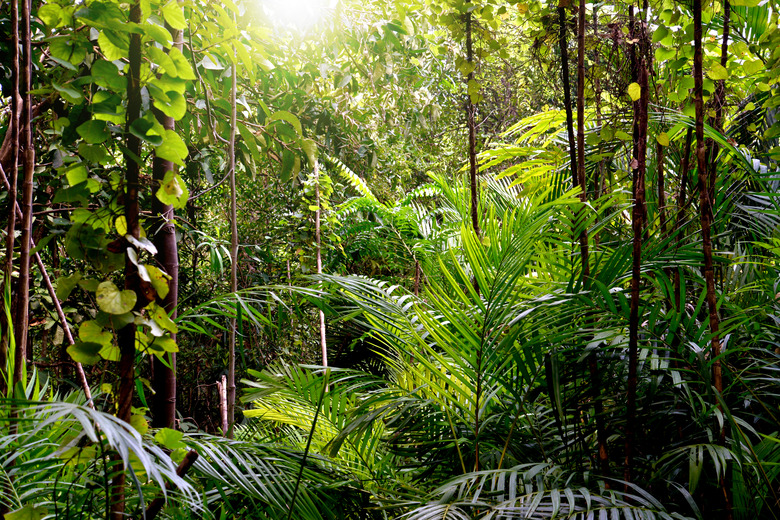What Are Earth's Three Major Climate Zones?
From frozen icy tundra near the Arctic Circle to lush tropical rainforests straddling the equator, the Earth's climate changes dramatically with each shift in latitude. In between these polar and tropical extremes, many of the world's major cities experience more moderate conditions within a temperate climate zone.
TL;DR (Too Long; Didn't Read)
Earth's climate can be divided into three major zones: the coldest polar zone, warm and humid tropical zone, and the moderate temperate zone.
Polar Zone
Polar Zone
The polar climate zones fill the areas within the Arctic and Antarctic Circles, extending from 66.5 degrees north and south latitude to the poles. Characterized by a short, cool summer and long, bitterly cold winter, the polar zone features frequent snowfall, particularly during the winter months. The far northern portions of Canada, Europe and Russia fall within this climate zone. Farther north and south, the ice caps that make up Greenland and Antarctica represent a sub-zone of the polar climate region known as the ice cap zone. Within the ice caps, temperatures rarely, if ever, rise above freezing, even during the warmest months of the years.
Temperate Zone
Temperate Zone
Extending from the southern edge of the Arctic Circle to the Tropic of Cancer in the northern hemisphere, and the northern edge of the Antarctic Circle to the Tropic of Capricorn in the southern hemisphere, the temperate climate zone falls between 23.5 degrees and 66.5 degrees north and south latitudes. Temperate climate zones experience warm to hot summers and cool winters, with the greatest temperature variations throughout the year of any climate zone. Climate within the temperate regions ranges from the cold, snowy winters of New England to the balmy, moderate weather associated with the Mediterranean or Southern California. Much of the United States, Europe and the southern half of South America fall within this climate zone.
Tropical Zone
Tropical Zone
The tropical climate zone stretches from the Tropic of Cancer at 23.5 degrees north latitude to the Tropic of Capricorn at 23.5 degrees south latitude, with the equator centered within this zone. Climate within the tropical zone varies from the tropical wet regions of the rain forest, to the drier arid and semi-arid climate of north Africa or central Australia. Within the tropical wet zone, the weather remains hot and muggy, with frequent rainfall and little temperature variation. The arid and semi-arid regions experience wet, warm summers and cooler, drier winters, with much greater temperature variation than the tropical wet zone.
Considerations
Considerations
Sun angle plays a major role in creating Earth's climate zones. Thanks to the tilt of the Earth on its axis, the sun strikes the area around the equator at a near-vertical angle, delivering substantial solar heat energy to this region. Closer to the poles, the sun strikes the Earth at a much shallower angle, resulting in less solar heat gain compared to the tropical zone. Prevailing winds and ocean currents then transport this solar heat energy throughout the globe. Factors such as elevation and proximity to the coast help to explain climate variations within a climate zone.
Cite This Article
MLA
Beach, Emily. "What Are Earth's Three Major Climate Zones?" sciencing.com, https://www.sciencing.com/earths-three-major-climate-zones-5186/. 23 April 2018.
APA
Beach, Emily. (2018, April 23). What Are Earth's Three Major Climate Zones?. sciencing.com. Retrieved from https://www.sciencing.com/earths-three-major-climate-zones-5186/
Chicago
Beach, Emily. What Are Earth's Three Major Climate Zones? last modified March 24, 2022. https://www.sciencing.com/earths-three-major-climate-zones-5186/
